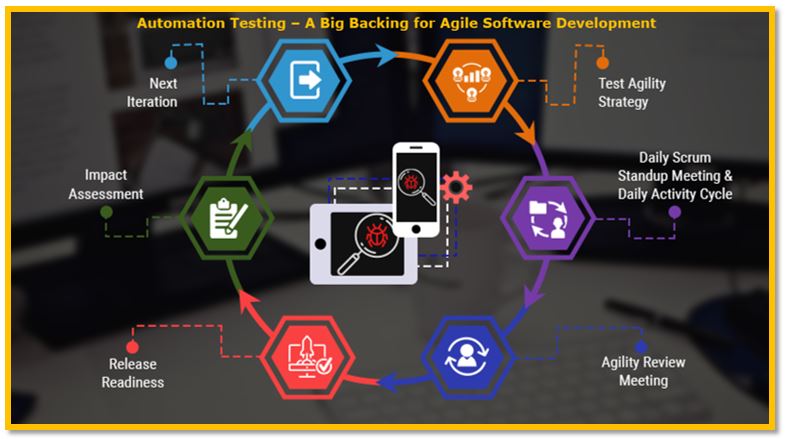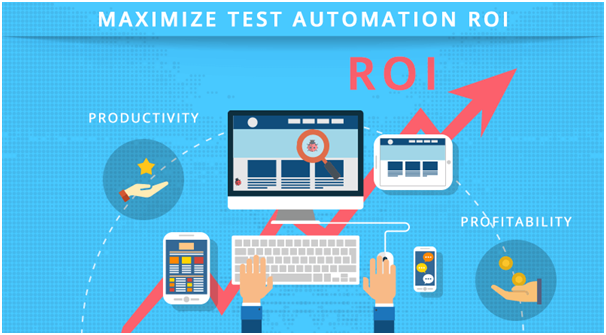Testing is a vital aspect in the software industry assuming greater importance with an increase in project complexity. With Agile models for software development emerging as the most practical ones, discussions are also hot about the DevOps model. The evolution of dynamic teams metamorphoses time & again.
A radically different approach in the test strategy as compared to the more traditional project execution strategies like Waterfall or Iterative is a call of the day for these contemporary methods; making automation testing the most conducive approach and indispensable value addition to API Testing, Agile Testing, and Extreme Programming.
To Automate or Not to Automate
Automation in testing lends a definitive edge by speeding up the testing process, as well as optimizing resources like time invested and staffing. Manual testing cannot be completely eliminated where human intellect is needed. However, more & more businesses are adopting automated testing to keep control over investments, while eliminating manual labor in repetitive tasks.
Automated testing may be too expensive for small projects where the time investment for manual testing is not significant. However, for larger projects, automated testing is gradually becoming a primary skill to invest in, with scripts performing many repetitive tasks in a fixed process framework. Cost vs resources, testing time, stakeholders input & overall project scope are key parameters that can help decide if automation testing should be leveraged.
The World of Agility
Consider a scenario where a new product development from scratch is undertaken. Within an agile team, new requirements have to be verified for each development iteration, and new features to be rolled out have to be tested successfully, along with verifying the system as a whole. In such cases, automated testing helps optimize the involvement time of the tester as well as the developer, while decreasing the test cases & test data.
In contemporary environments of software development, it is likely that new test cases will be generated on a spur & in continuation with development stages. With automated testing, new test scenarios can be bundled with the existing test cases automatically with continuous software development. The overall efficiency of the testing cycle increases as automated testing is fast and can run at predefined frequencies. Agile automated testing, the effective, sharp and accurate test methodology, nearly eliminates possibilities of manual errors for repetitive test modules, thus becoming more relevant for increasing the efficiency of software development & deployment cycles.
Automation in software testing is incomplete without a key requirement of any Agile software development requirement – collaboration. Testing & QA teams will need to keep a tab on test tasks that are of repetitive nature to decide the requirements related to Agile. Similarly, developers take care of functional test automation to ensure monitoring while the development of the feature is in progress.
Making Test Automation Effective
Automation testing, although sounds promising, comes with its own set of challenges to consider. It is imperative that automated testing is applied after appropriate planning & justification of the corresponding business case. Developer connect is also vital for the QA team to keep an eye on what is happening with features & functionalities as the lifecycle progresses. The assurance team needs to remain in sync with all key changes within the framework or architecture, whether it is platform migration or potential bugs that could be introduced due to configuration changes or infrastructure challenges.
Aspects that go a long way in making automated testing effective for an enterprise deserve exploration.
Appropriate Timing
Automated testing should be planned so as to run in sync with actual development to eliminate possible delays. Agile development is and will continue to remain a mix of sprints & iterations. Time allocation for assurance is a critical aspect that the QA team should consider, and identify testing mechanisms that are efficient & cover all requirements.
Appropriate time allocation will also ensure product quality. In a dynamic environment, finishing sprints on time is an imperative aspect, but if quality benchmarks are not met, it results in rework & increased effort. Hence, deciding the time to leverage automated QA & testing methods is a vital aspect in the agile software development & testing cycle.
Implement Regression Testing
Regression testing is again a repetitive aspect, and if automated carefully can go a long way in improving test efficiency. In complex projects, changes are bound to happen to previously developed software, making regression testing vital to assure system functionality.
With automation, the QA team does not have to change the test scripts on multiple occasions to validate regression.
Offer Complete visibility
Just implementing automation testing services without appropriate tracking will not lend an effective edge to the Agile environment. It is important that statistics, trends, and how the automation has led to improvements in quality assurance will help highlight positive aspects generated out of the exercise, as well as increase resource motivation.
Enhanced visibility on how automation makes the testing cycle better will lead to better collaborations while keeping the team bound to processes and the automated framework.
Automate Selective Components Only
Implementing automation just to lend a fancy tag does not suit the agile framework. While automated testing can go a long way in improving efficiency, it is important to determine the tests that are being automated are relevant to the software solution.
Testing is an integrated part of the overall development lifecycle, hence automation needs to be leveraged taking into account factors like test maintenance & timing required for execution.
Tests that slow down the test cycle & ultimately framework development, and are probably better performed manually can be excluded for automation.
Take into Account Business Case Considerations
For any enterprise, willing to invest in automated testing, the evaluation of RoI is of extreme importance. The agile team can begin one step at a time, and try automating simple tests to examine the yield & benefits.
If the productivity gains seem significant, eventually automation in testing can be made an integral part of the agile development lifecycle.
Effectively, an ideal, singular test automation framework is not the real solution, as there are many factors impacting development & testing. Manual testing needs to be blended in time & again.
Explore Ideas & Tools
With agile software development, brainstorming of ideas can go a long way in helping decide the test plan & refining the requirements baseline. Ideation will lead to better automation scope, which will ultimately benefit overall product quality. Estimation & piloting tools can also help improve the software lifecycle.
Projections can be better charted by leveraging state-of-the-art tools, which lead to effective test automation within the agile software development framework.
On a Parting Note
With Agile & DevOps gaining mainstream momentum, the old test excellence centers are bound to become extinct. It is projected that 2017 should see businesses & enterprises organize Key Performance Indicators – KPIs to chart performance data with sales statistics requiring more involvement from testing teams from the time when the software is being developed for ensured accuracy & agility. Automated testing tools like Selenium, TestingWhiz, Ranorex, and more will continue to drive automation testing services, and eventually, play a key role in the Agile & DevOps landscape.
With dynamic development methodologies paving the way, Performance Engineering will replace the plain & traditional Performance Testing and by 2020, traditional testers will have evolved to Software Development Engineers in Test or SDET.
Request A FREE POC To Test Drive our Services






